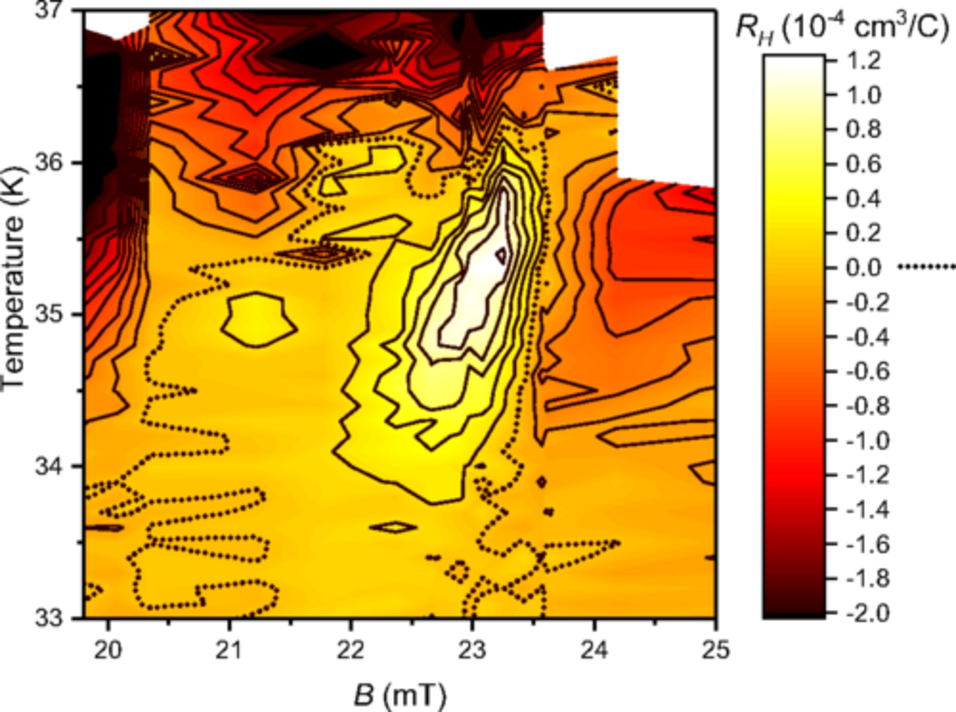In superconductors with a periodic pinning potential, the vortices can lock into a commensurate arrangement, where each pin is filled by one vortex. Then, an intriguing duality between conduction electrons in a normal metal and mobile vortices in a superconductor arises. While the mutual repulsion of electrons can evoke a Mott insulator, the interaction between mobile and commensurably trapped vortices can lead to a vortex Mott metal-to-insulator transition with vanishing resistance. The authors report on a hitherto unknown manifestation of such a state, uncovered by measurements of the voltage orthogonal to the injected current. This vortex Hall effect exhibits a sharp peak and a change of sign when the number of vortices exactly matches that of the pins.
News
Editors' Suggestion in PRB
20.09.2018

Contour plot of the Hall coefficient at various temperatures and magnetic fields of a YBCO film with a columnar defect array. The bright area corresponds to a maximum of the Hall effect at the matching field. The dotted line indicates the bifurcation, where the Hall effect emerges with different sign.
